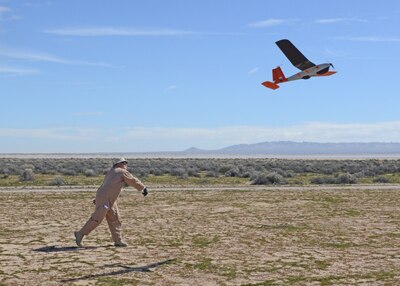
WASHINGTON —
Three Defense Department research entities outlined the department’s artificial intelligence initiatives in the face of great power competition March 12 during a hearing held by the Senate Armed Services Committee here.
Witnesses included Steven H. Walker, Defense Advanced Research Projects Agency director; Michael Brown, Defense Innovation Unit director; and Air Force Lt. Gen. John N. T. “Jack” Shanahan, Joint Artificial Intelligence Center director.
AI is changing computers from tools to partners, Walker told the senators.
“It’s a great time to be at DARPA because we’re on the brink of a lot of really exciting things and that’s the genesis of the current initiative – the $2 billion investment that we’ve said we’re now making in AI technologies,” he said.
DARPA’s AI focuses on dealing with adversarial AI, high-performance computing cycles and minimizing energy, while delivering radically new capabilities, Walker said.
“This is the … genesis of the AI Next campaign — creating systems capable of reasoning with generative, contextual and explanatory models,” the DARPA director said. “We already have over 20 [new] programs running in AI,” with more than 80 programs in the agency, he added.
“About one-third of the programs in the entire agency now are either creating AI technologies or [are] aggressive users of those technologies,” Walker said.
Defense Innovation Unit
“China and Russia have already recognized the enormous commercial and military potential of AI and are investing heavily with aims to become dominant,” Brown told the committee. “By 2025, China aims to achieve major breakthroughs in AI, and increased its domestic market to reach $60 billion.”
On the other hand, the DIU director added, Russia is behind the United States and China in its overall AI investment research and startups.
In the face of great power competition, DIU is working alongside the rest of DOD to “maintain our technology edge, not only in AI, but in other dual-used technologies,” he said.
As a foundational technology, DIU’s AI portfolio prioritizes projects to address three major impact areas where AI is proven to excel commercially, Brown said.
Those areas are computer vision — adding automation to object recognition and infrastructure assessment, large data-set analytics and predictions making sense of massive data sets and patterns more efficiently and cost-effectively than by human analysts, and strategic reasoning — mapping problematic chains of events and developing alternative strategies to inform top-down planning in environments characterized by uncertainty, missing information and speculation.
“DIU is prototyping an application that leverages AI to provide insights to high-level strategic questions,” Brown said, adding, “with these projects, DIU engages across [DOD] on AI and makes its commercial knowledge in relationships with potential vendors available to any of the services, service labs and components.”
Enabling DOD to be a better customer for early-stage companies will not only help it acquire the best commercial technology faster and cheaper, the DIU director said. “[It] will also provide access to the ideas of sought-after AI talent that DOD may not be able to attract,” the director said.
“The more we collaborate with the private sector on mutually beneficial projects, the more opportunities we’ll have to engage in open dialogue about the applications and principles for the use of AI,” he added.
Joint Artificial Intelligence Center
Shanahan told the committee that the JAIC is the focal point of the DOD AI strategy. The center stood up in June 2018 to provide a common vision, mission and focus to drive departmentwide AI capability delivery.
Projects at the JAIC, he said, are in one of two categories: national mission initiatives, or NMIs; and component mission initiatives, also known as CMIs.
“NMIs are driven and executed by the JAIC as broad, joint crosscutting AI challenges, whereas CMIs are component led, but are able to make use of JAIC’s common tools, libraries, best practices and more,” Shanahan explained.
He told the committee JAIC’s first two NMIs are predictive maintenance with Special Operations Command in an Army UH-60 Black Hawk helicopter use case, and humanitarian assistance and disaster relief, where JAIC will field AI capabilities to help with natural events such as wildfires and hurricanes.
“At the same time, we are in the early problem-framing stage for another proposed NMI in fiscal year 2020 that will be more oriented on the National Defense Strategy in operations against peer competitors,” Shanahan told the senators.
He noted that the JAIC also is working with the military services and combatant commands on applying AI to help with diverse areas that include suicide prevention, preventive medicine and information operations.
All three directors said their entities need people.
“The success of human-centered AI and human/machine teaming within DOD requires growing and sustaining an AI-ready force,” Shanahan said, “one that is conversant in the language of AI, willing and able to operate with a new kind of speed and agility.”



